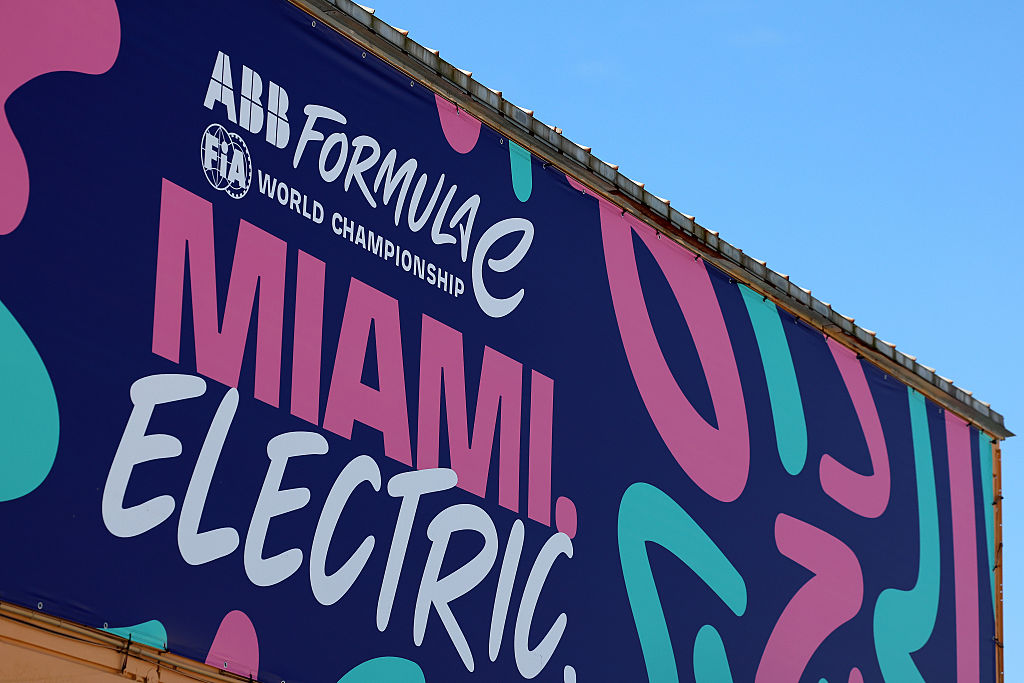
A decade on from its last proper visit to the state of Florida, Formula E is gearing up for a return. Unlike last time, however, the Miami E-Prix won’t be taking place on the streets along Biscayne Bay, but at nearby Homestead-Miami Speedway.
Best known these days as a NASCAR venue, Homestead is no stranger to welcoming other categories, with IndyCar, sports car racing, Formula Regional and even Superbike racing all having occurred at the track in years past.
While this weekend’s Miami E-Prix will be the first open-wheel series at the track since Formula Regional Americas visited in 2020 (and the first top-level open-wheel race at the facility since IndyCar’s Grand Prix of Miami in 2010), it will also be the first time at all that an all-electric series has visited the venue.
Minor changes to Homestead’s road course have been made for this weekend, with a tighter Turn 1 and a chicane being added to the back stretch. Track length in total comes in at 2.206 miles, with 15 turns (not counting a slight left kink onto the start-finish straight at the end of the lap).
It’s a far cry from the eight-turn, 1.345-mile street circuit from 10 years ago. The series itself is unrecognizable, too. We’re two-and-a-half generations of car ahead, and things like mid-race driver changes and Fan Boost are distant memories.
Speaking of the track, DS Penske’s Jean-Eric Vergne described it as “a demanding circuit.”
“It is not just about the speed,” he explained. “You have to be smart with energy use and stay clean through the technical sections. With the added heat and humidity, it is going to be a real test for everyone on the grid.”
Five drivers from Formula E’s previous race in Miami – Sam Bird, Sebastien Buemi, Lucas di Grassi, Antonio Felix da Costa and Vergne – still compete in Formula E today.
Vergne, then driving for Andretti, started on pole and led until overheating issues dropped him out of contention. Abt’s Daniel Abt subsequently led but Renault e.dam’s Nicolas Prost – who pitted to swap to his second car a lap later than the German – capitalized on an energy advantage to get by with two laps to go.
Abt then was passed by Scott Speed – making his debut for Andretti – to drop him to third and ensure America’s first Formula E race had an American on the podium.
While the event was a success, Miami didn’t stick around for the second season of Formula E as the championship continued to grow and develop. Additional U.S. venues took its place, though.
There was a race in Long Beach three weeks later utilizing most of the IndyCar course – coming in at 1.302 miles as opposed to the full 1.968 miles – won by eventual series champion Nelson Piquet Jr. (who took the fastest lap in Miami), and another there the following season, won by di Grassi.
For Season 3, Formula E headed to New York for races in the Red Hook area of Brooklyn – an event that would go on to be the longest-serving U.S. venue in Formula E, sticking around for five seasons (notwithstanding a one-year absence due to the COVID-19 pandemic).
The 2017 New York City E-Prix was the first open-wheel street race in the greater New York area since the 1991 Meadowlands Grand Prix in East Rutherford, New Jersey – that in itself ended a 47 year gap since the last true Vanderbilt Cup race when it debuted in 1984. It also succeeded where the proposed Grand Prix of America failed, with F1’s plans for a New York street race in the early 2010s not coming to fruition.